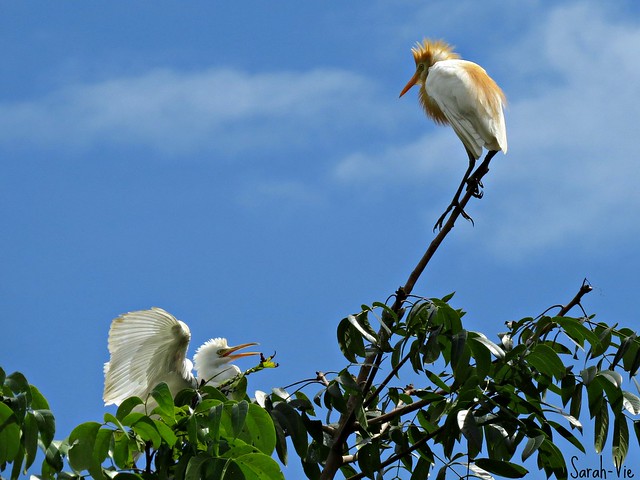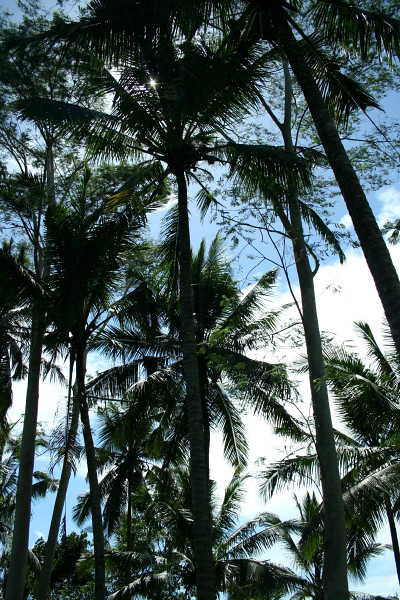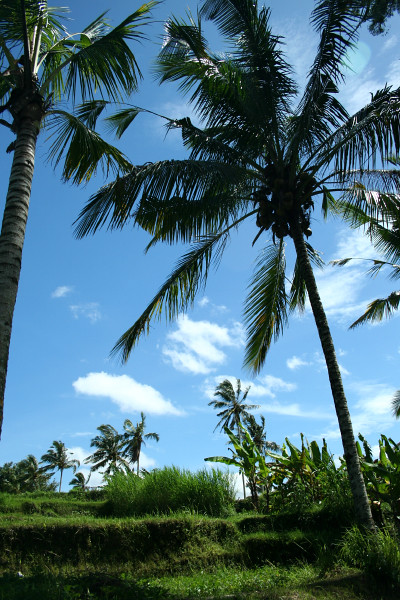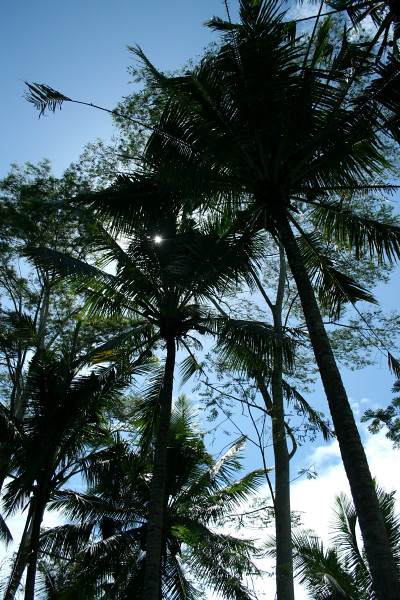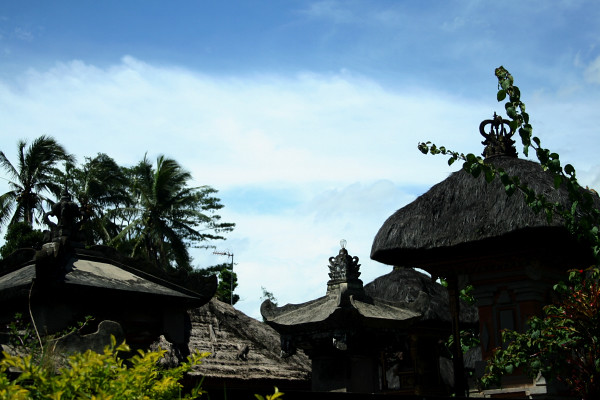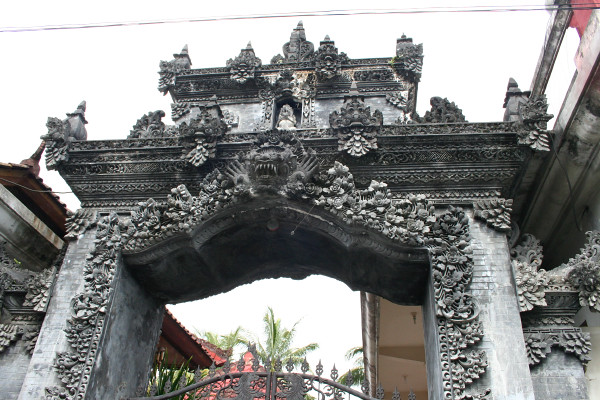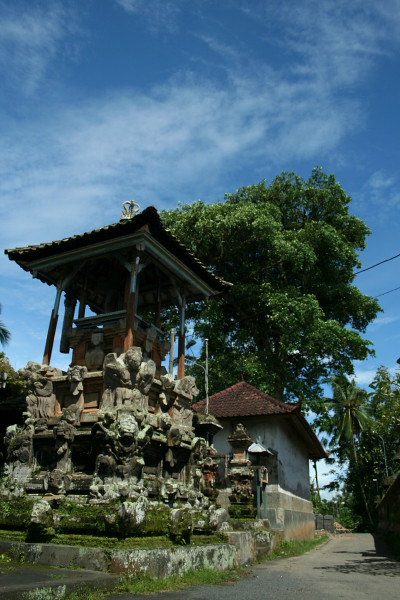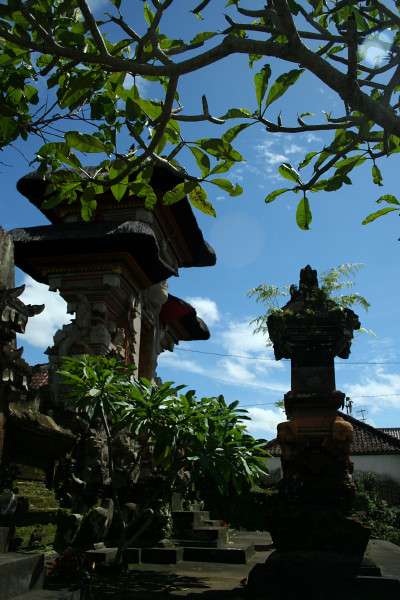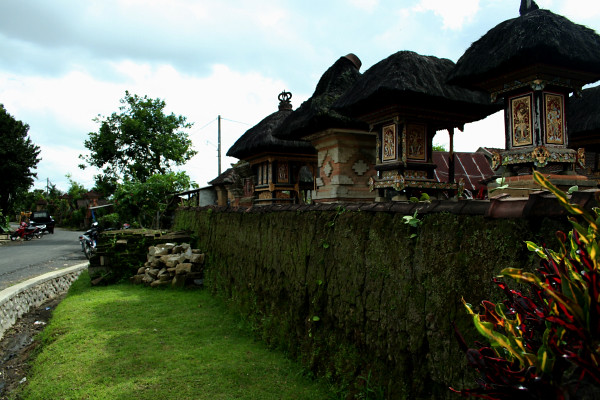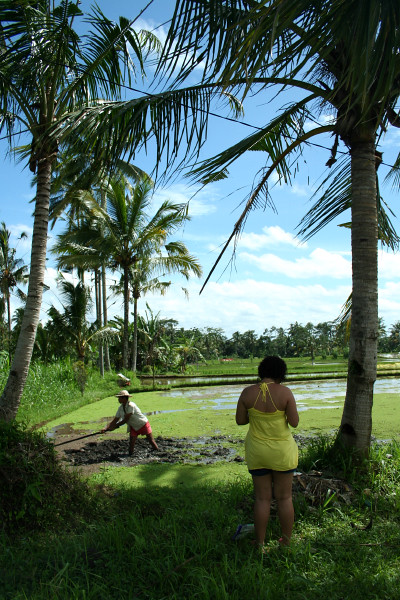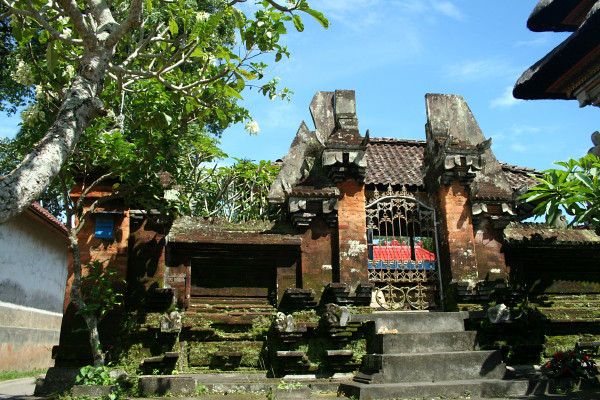Creatures of extreme and odd habits are fascinating. I love that they seem to know something we don’t.
Salmon swim upstream to partake in their once in a lifetime death orgy, geese fly home for the winter, penguins make their long, deadly march. Their habits are all partially explained as instinctive and circumstantial, but regardless of how many National Geographic’s I read or watch, I am still often left baffled at their choices.
I recently watched a video that showed male squid that change colour when they fight as an angry deterrent to potential threat. Their unique skills in disguise allow them to control the color change down to a fine line. Males that accompany females will be a placid, neutral color on the side that the female can see and an angry, aggressive color on the opposite side. They can even swap sides seamlessly, without ever allowing the female to see their unattractive, argumentative side. I’m sure this can be explained down to the tiniest scientific detail, but I prefer the simple explanation that they are big squidgey romantics at heart.
Back home in England, the heron is a rare sight. A sight worthy of a pause and a ponder when you see one majestically and elegantly swooping down to steal your neighbors Koi Carp. So to be surrounded by these white wonders was something I was excited to see.
Equally, I like to believe that the salmon do all that swimming for the ultimate sexual encounter, and the consequential death is worth it. Geese, like humans, just have a Christmas obligation to visit their hometown and extended family. And penguins? Well, they just love a good challenge. Seriously, look at them. The little Pingu’s can’t do anything but they’re triers, bless ’em.
Why are we talking about penguins in a Bali article?
No reason.
What’s this about then?
Herons. Loads of them.
Petulu village sits around fifteen minutes drive north of Ubud. At sundown every evening, droves of Kokokan birds (herons) fly from all over the island to settle in this tiny strip of a toy town. And I mean big droves. From around 5.30pm, the birds come home to settle in a handful of the fifty or so trees that are dotted around the village. The show lasts around 2-3 hours and is made up of 375,000 squawks, 45,000 heron. Ok, those numbers are completely fabricated. But it’s a lot.
Depending on the time of year, local estimates put the numbers in the tens of thousands, but to my best guesstimate I would say 3-5000 is a closer ballpark, though I did visit during the low season for heron population and there is an apparent spike in numbers from October through to March. Not a fabricated fact.
Map Petulu Village
History
The origin of the herons is locally attributed to a strange, wonderful and heartbreaking story. In the mid 60’s, Indonesia suffered a terrible period of mass murder. Members of The Indonesian Communist Party were systematically slaughtered in a devastating massacre that produced a death toll of around 5% of the entire population of the country. Official reports have been rehashed; lost in time and politics. Word of mouth reports, however, indicate that many bodies were never found or given the respect of proper funeral rites, and so the lost souls of the dead were left to this world.
One tiny village, just North of Ubud, held a ceremony to cleanse the village of the evil energy that lingered after the massacre. One week later, the Kokokan birds arrived in Petulu for the first time, and they have remained there ever since. The legend goes that the wandering souls took these birds as vessels and returned to this peaceful town.
Today, the birds stand as sentinels, protectors of Petulu that keep the townsfolk free of pests and bad spirits, and they are respected and treated as such. The locals believe the herons have brought the village a blessing of prosperity ever since they arrived.
How to get there
As always, I recommend hiring a motorbike if you have the confidence and the right credentials, as the drive from Ubud to Petulu is gentle and lovely. If not, it is easy enough to hire a driver from Ubud centre, but I would advise adding it to a larger itinerary to save a little time and money. Head North on Jalan Tirta Tawar as this is the most picturesque route, with the least traffic. Keep going until you see a hand drawn sign for Petulu village, you can’t miss it.
Passing through Petulu is a little odd from the get-go. The entire village is one long street, with rice paddies either side. At each end of the town there are small sentry posts that are manned all day, despite the tourist attraction only kicking in around dusk. Slow down enough on your way past and you will be very politely collared and asked for a 20,000 rupiah donation for access through the town. Unlike some obvious scams, the money here genuinely benefits the community and isn’t simply pocketed by the most entrepreneurial (read – pushy) tout, like so often is the case.
I visited early, en-route to another attraction and was a little surprised at the cost simply for passing through. We were assured that the ticket we received would be valid for as many passes that day as we needed, so paid for our evening visit to see the phenomenon.
Ceking Rice Field, Tegalalang
Time your trip well and you can visit the nearby Ceking rice terrace in Tegalalang and see them bathed in early evening light, then return to Petulu in time to catch the first few droves of sleepy birds coming home.
Head South-East of Petulu center until you meet the main road then turn North and just keep driving. After 15 minutes or so you will arrive in Tegalalang village and begin to see the quintessential Bali rice paddies on your right. Drive straight through the crowds, the busy traffic and the huddles of pushy touts and visit the the restaurant at the far northern end of the terrace. The food is poor and overpriced and the beer is almost twice what you can pay elsewhere, but the staff are friendly and accommodating and the view is heavenly, unobstructed by gift shops or clueless tourists. You can have a wander through the paddies too, but bring good boots if you are there during rainy season.
Petulu
The drive back to Petulu around this time of the evening lets you chase the sunset over the horizon. Immediately upon entering the village outskirts we were hit by the overwhelming scent of clove cigarettes, incense and the burning of dead crops and trash. The aroma is intense and deliciously rousing, not because it smells like burning waste but because it is the scent of something so foreign to the everyday. It is the scent of anarchy, of being in a place where no-one will come along to stamp out your roadside fire. Some other places you can experience this smell are at the burning Ghat’s in Varanasi, India and in music festival campsites. My world rarely smells like this, and when it does, it is always exhilarating.
We drove past crowds of shirtless local men, beating their chests and cheering ecstatically as the adrenaline of a cock fight absorbs them. Like the herons, the cockfight is of strong spiritual significance in this part of the world. Although technically illegal in Bali, cockfights happen all over the island and are quite prominent in Petulu. The Hindu belief is that the blood that is shed by the losing cockerel is a sacrifice that cleanses and expels evil spirits. Although, with the fervent exchange of money that goes on, you are left wondering just how religiously driven the fights are.
Driving through the village didn’t take long, and we soon found ourselves at the far end, without a heron in sight and wondering where to look. A friendly man came out of his house to thank us for our visit to Petulu and turned us back around.
“Back down there, halfway down. House where they play table tennis, park anywhere.”
We found the ‘house’, not much more than a half-built set of concrete foundations with some steps up to the roof, though sure enough it was busy with a local table tennis tournament. Another helpful local pointed us to the steps with a cheshire cat smile and we climbed into the tourist roost.
Hitchcock
The birds come in droves of up to a dozen and jostle for a position on select trees dotted throughout the village. A few of the larger trees seem favored and competition can quickly become fierce as the late stragglers find themselves circling the prime spots and being greeted by snaps and hisses if they land too close to an already settled heron.
I found a similar thing, in the small circle of tourists, with an even smaller line-up of benches and stools offering prime viewing position. I found myself circling a few times while families hooted and pointed and snapped their shots then, like a bird of fortune, I swooped in and stole a seat when a young couple stood up to leave.
A hunched lady, at least 150 years old, pushed a cart filled with vegetables up the road, weaving deftly left and right and navigating by the discolored patches of road, stained with years of heron waste. The walk has obviously been practiced a thousand times and is something that the panicky tourists wish they were savvy to, as they duck and run and hope for the best. Other locals are placing incense and blessings or pausing to take stock of the returning birds at this daily moment of peaceful closure. There really is a feeling that those who live here profoundly appreciate the birds, despite the droppings and the noise.
By the dwindling light, the herons double in number. Flash photography doesn’t fit in well with a village of sleeping birds, so evening pictures don’t really do it justice. It is an event that really needs to be seen in person to be appreciated.
From my perch, I spent as much time looking down as I did up. The rooftop offered me that belly warming position you rarely get the opportunity to experience: watching the world without the world knowing that you are watching.
Sitting on plastic chairs in the dark, on a run-down roof, listening to the ping-pong of an open air table tennis tournament and the squawking herons as they shake off the days sins, you find yourself wondering at the mystery of the birds and the surreal nature of Petulu.
While the birds are a spectacle, Petulu itself is the creature of odd habit that I find both curious and lovely. For almost 50 years and counting, this precious little town has worked in harmony with the herons and kept them coming back.
Here, the tale of the massacred souls still stands. But I don’t even want to believe that. If you ask me, the herons come home because life is good here. The locals love them and live beside them rather than despite them. Petulu is peace, and I would sleep here too.
Luckily, the town doesn’t seem to have been too caught up in the rapid growth of the Ubud region. One wonders how long the birds will stay when the inevitable does creep up on them.



 (8 votes, average: 4.63 out of 5)
(8 votes, average: 4.63 out of 5)



